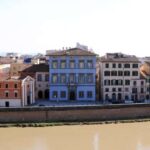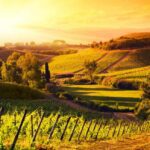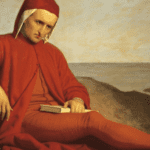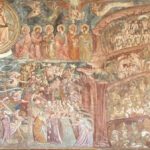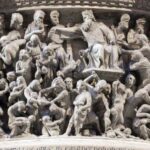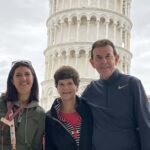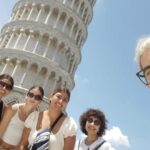Visiting Pisa. I am writing this article to help you organize your visit to Pisa in the best way. I will make a small summary of the most important things to see in Pisa and in the next articles, we will see the surroundings.
I have been a guide of Pisa for over 7 years and I have been living in Pisa for a long time now so I would also like to share with you some gems of the city, such as the lesser known places, which are small hidden jewels.
And now, after this brief parenthesis, let’s get straight to the point and start organizing the trip in the best possible way.
The fame of the Leaning Tower
Pisa, we have all heard about this city at least once in our lives, indeed, I correct myself, we have all heard about the Tower of Pisa at least once in our lives.
The Leaning Tower is so famous that the city of Pisa itself is erased from the Tuscan geography, even if, fortunately, this is only true for a few.
‘Permany of personal experience, talking to many tourists every day, I have even noticed that for some ”Pisa” is the very name of the Leaning Tower.’ This all-cake tower is so famous that people all over the world are ready to face hours and hours of travel to make a stop in Pisa, arrive in the Piazza dei Miracoli, take the infamous photo with the Leaning Tower (an action that takes at least an hour) and leave. In this way, however, they fail to see the other wonders that this city possesses, overshadowed by the fame that this tower that hangs but does not fall has earned all over the world.
Visiting Pisa: The Piazza dei Miracoli
If you come to Pisa so as not to stop only at the Tower, there is much more to see in the Piazza dei Miracoli.
Spend at least half an hour visiting the Cathedral, also because the entrance is completely free, and this gem is really worth seeing.
He also enters the Baptistery and listens to its wonderful acoustics, and visits the monumental Camposanto. There is still ongoing the great work of recovering the frescoes that began at the end of World War II. Not doing that would be like starting to see a movie and missing the ending. You can discover these wonders with our Miracle Tour
Another important thing to know is that the Piazza dei Miracoli, which as we have already said is the focus of Pisan tourism, is located north of the city itself, therefore outside the historic center of Pisa. If you want to get to know the real city, therefore, you have to walk through its streets full of tower houses, the typical medieval buildings.
Visiting Pisa: the city center
Not far from the Piazza dei Miracoli stands another beautiful square, Piazza dei Cavalieri, formerly the fulcrum of the political power of Pisa and today the seat of the Scuola Normale Superiore.
But do not think that it ended here, a few steps from this square, in via San Frediano stands the Sapienza, the first headquarters of the University of Pisa, right here he was first a student and then professor Galileo Galilei. Well yes! Although most people think that Galileo Galilei is Florentine, I deny you here: the great genius was Pisan!
Leaving the Sapienza you can easily reach the Pisan Lungarni which according to the poet Giacomo Leopardi, who stayed for a period in Pisa, are far better than the Florentine Lungarni! Walk them all far and wide and pause to admire the church of Santa Maria della Spina, a small Gothic jewel leaning against one of the banks of the Arno river.
All these things you can admire with our Pisan Tour
Borgo Stretto and Corso Italia are the two main streets of the city, the first oldest, the second more modern, in the first most of the shops are very expensive, in the second they are much more affordable.
If you are a lover of Keith Haring and contemporary art: you should not miss the opportunity to see his greatest permanent European work, the Tuttomondo mural.The grandiose work of the contemporary artist is located at the end of Corso Italia, in the square next to Piazza Vittorio Emanuele. The mural remains a bit hidden, so much so that almost no one knows that there is a work of similar beauty in Pisa, but once you find it in front of you it certainly does not go unnoticed.
Stroll through the historic districts of Pisa: the district of San Martino, Sant’Antonio, Santa Maria, San Francesco, and another piece of advice I give you is: get lost.
Getting lost is the best way to visit a city, and then Pisa is so small that even if you get lost and never find your way back you could always ask someone: “Excuse me, for the Leaning Tower?” and suddenly you would find new ones on your steps.

The museums of the city
In Pisa there is certainly no shortage of museums to visit and the first one I would like to mention is the Archaeological Museum of Ancient Ships (Lungarno Ranieri Simonelli, 16) inaugurated in 2019. The museum houses the remains of ships found in the currently occupied area of Pisa San Rossore station.
The ancient remains are all datable in a time frame ranging from the Hellenistic era to the fifth century AD. Inside the museum are also exhibited the treasures and cargoes found inside the ships. The discovery, in 1998, was so resounding that it earned the nickname of ‘Pompei di Mare’.
For lovers of medieval art, the Museum of San Matteo (Piazza San Matteo in Soarta, 1) is important for its large collection of painted crosses, but not only, inside there is also a large collection of ceramic basins, sculpture and medieval painting.
The Museo dell’Opera del Duomo (Piazza del Duomo, 23) was reopened shortly after a major restoration and beautification work. Inside are preserved sculptures, paintings and various works that were initially placed in the monuments of the Piazza dei Miracoli.
The Museo delle Sinopie is another museum located in Piazza dei Miracoli, where you can observe the preparatory sketches of the frescoes preserved in Camposanto.
Inside the National Museum of Palazzo Reale (Lungarno Antonio Pacinotti, 46) are works ranging from the time of the Medici family to the twentieth century. Of particular interest is the collection of ancient armaments that were used in the Bridge Game.
Inside Palazzo Blu (Lungarno Gambacorti, 9) you will find a permanent exhibition that includes works ranging from the medieval to the modern era, while in another wing of the museum several exhibitions of well-known artists are periodically exhibited (Dalì, Toulouse-Lautrec, Andy Warhol, etc.).
Gypsum library of ancient art (Piazza San Paolo All’Orto, 20), here is preserved a series of plaster casts of the most famous works of Italian art. So, if you don’t want to make very long lines in the most renowned museums in Rome, or other cities, to see the Laocoön, the original Capitoline Wolf, etc., you can always visit the Gipsoteca of Pisa and admire these beautiful copies without the crowd of tourists in front of you.
Museo della Grafica di Palazzo Lanfranchi (Lungarno Galileo Galilei, 9) preserves one of the most important public collections of contemporary graphics.
To conclude, I would like to suggest, for those who are passionate about Piaggio, another museum that is located not far from Pisa, the Piaggio Museum (Viale Rinaldo Piaggio, 7 – Pontedera), inaugurated in 2000 in the premises of the former workshop where the company began its production in the early twenties.
